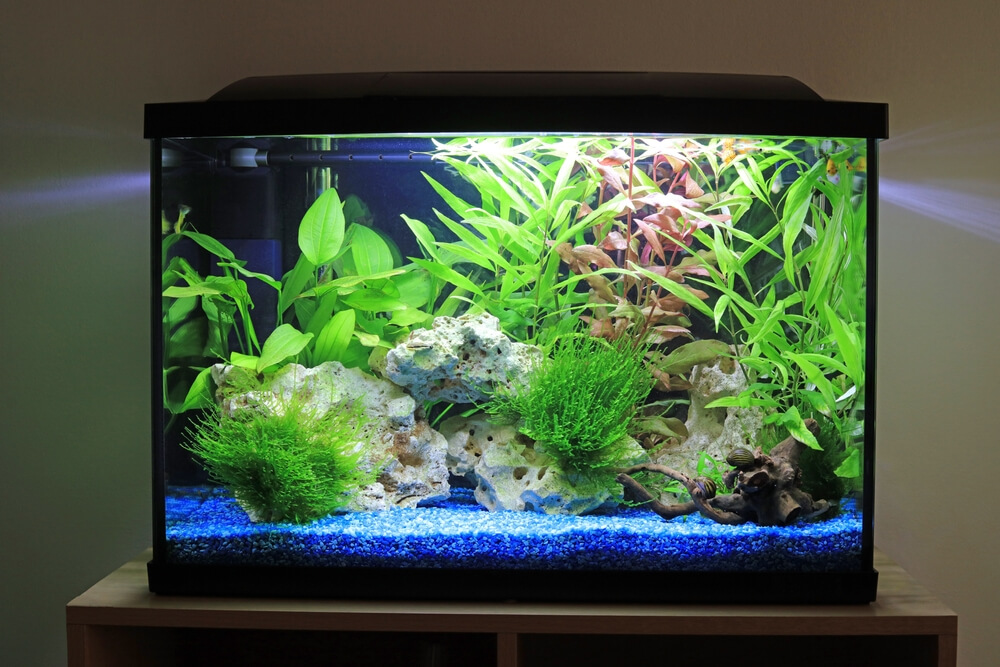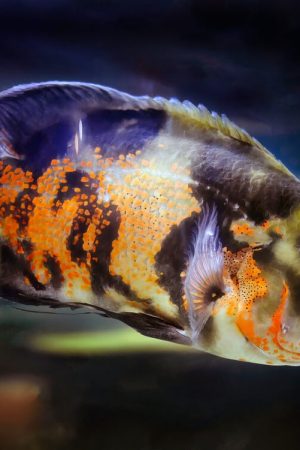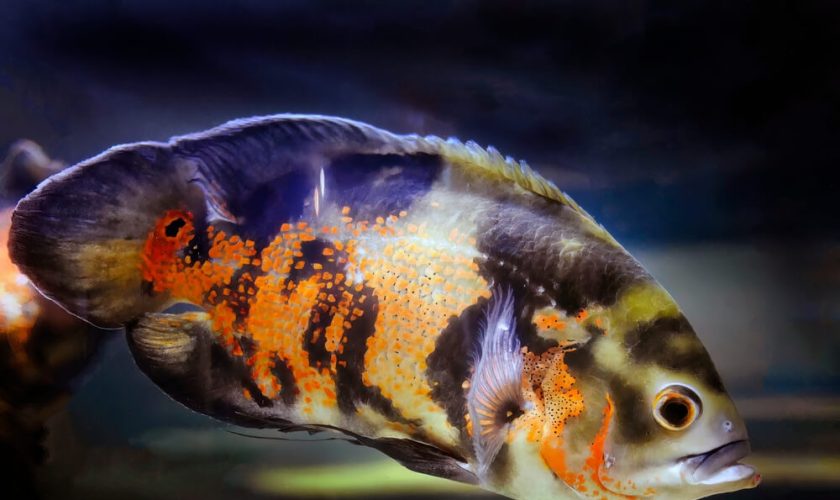Oscar fish captivate with their vibrant colors and engaging personalities. Native to the Amazon basin, these freshwater giants can grow up to 12-14 inches in captivity and require specific care. This guide covers everything from setting up the ideal tank and providing a balanced diet to understanding health issues.
Understanding the Oscar Fish
Oscar fish, a popular choice among aquarium enthusiasts, belong to the cichlid species and are known for their striking appearance and engaging behavior. Understanding oscar fish care is crucial for maintaining a healthy environment for these freshwater fish.
Oscar fish can grow up to 12-14 inches in length, requiring a spacious tank of at least 55 gallons to thrive. They are native to the slow-moving waters of South America, which means they prefer warm water temperatures between 74-81°F and slightly acidic to neutral pH levels ranging from 6.0 to 7.5.
When it comes to diet, oscars are omnivorous but have a particular fondness for protein-rich foods such as insects, small fish, and commercial cichlid pellets. It’s essential to provide them with a balanced diet to ensure their vibrant coloration and overall health.
One key aspect of oscar fish information is their social behavior; they can be territorial and aggressive towards other tank mates. Therefore, it’s advisable either to keep them with similarly sized or larger cichlids or house them alone if aggression becomes an issue.
Regular maintenance of water quality through frequent water changes and efficient filtration systems is vital in oscar fish care. By understanding these oscar fish basics, aquarists can create an optimal environment that allows these captivating creatures to flourish in home aquariums.
Setting Up the Ideal Tank Environment for Your Oscar Fish

Setting up the ideal tank environment for your Oscar fish is crucial to ensuring their health and happiness. Oscars are known for their vibrant colors and engaging personalities, but they also have specific needs that must be met.
First and foremost, consider the aquarium size for Oscar fish. These fish can grow quite large, often reaching up to 12 inches in length. Therefore, a minimum tank size of 55 gallons is recommended for a single Oscar. If you plan to keep more than one, you’ll need an even larger tank to provide adequate space.
Next, think about the water parameters for Oscar fish. They thrive in water with a temperature between 74°F and 81°F (23°C – 27°C) and a pH level ranging from 6.0 to 8.0. It’s essential to maintain stable water conditions as fluctuations can stress your Oscars and make them susceptible to diseases.
When it comes to tank decorations for Oscars, choose items that are both functional and aesthetically pleasing. Large rocks, sturdy plants (either real or artificial), and driftwood can create hiding spots and territories which help reduce aggression among tank mates. Avoid sharp or small objects that could injure your Oscars or be swallowed by them.
Lastly, regular maintenance is key in an Oscar fish tank setup. Perform weekly water changes of about 20-30% of the tank volume to keep the environment clean and healthy. Use a good quality filter capable of handling the bioload produced by these large fish.
By carefully considering these aspects you’ll create an ideal habitat where your Oscar fish can thrive.
Feeding Your Oscar Fish Properly
Feeding your Oscar fish properly is crucial for their health and longevity. Understanding the nutritional needs of Oscars can help you provide a balanced diet that supports their growth and well-being.
Oscar fish are omnivores, meaning they consume both plant and animal matter. The best food for Oscar fish includes a variety of options to ensure they receive all necessary nutrients. High-quality commercial pellets should form the staple of their diet, as these are formulated to meet the specific nutritional needs of Oscars. Look for pellets that contain a good balance of protein, fats, vitamins, and minerals.
In addition to pellets, supplementing with live or frozen foods can enhance their diet. Options such as brine shrimp, bloodworms, and mealworms provide essential proteins and stimulate natural hunting behaviors. Additionally, incorporating vegetables like peas or spinach can offer vital fiber and other nutrients.
Feeding Oscars should be done in moderation; overfeeding can lead to obesity and water quality issues in your aquarium. Aim to feed them small portions two to three times a day rather than one large meal. Observing your Oscar’s eating habits will help you adjust quantities appropriately.
By understanding the oscar fish diet and feeding oscars with a variety of high-quality foods, you ensure they thrive in your care while maintaining optimal health.
Common Health Issues in Oscar Fish and How to Prevent Them
Oscar fish are popular among aquarium enthusiasts due to their vibrant colors and engaging personalities. However, like all pets, they are susceptible to various health issues. Understanding common health problems in Oscar fish and how to prevent them is crucial for maintaining their well-being.
One prevalent issue is Hole-in-the-Head disease, characterized by small pits or holes on the fish’s head and lateral line. This condition is often linked to poor water quality and a lack of essential nutrients. To prevent this, ensure your tank has clean water with stable parameters and provide a balanced diet rich in vitamins and minerals.
Another common ailment is Ich, or white spot disease, caused by a parasite that leads to small white spots on the fish’s body and fins. Stress from sudden temperature changes or poor water conditions can trigger Ich outbreaks. Maintaining consistent water temperatures and performing regular tank maintenance can help keep this parasite at bay.
Fin rot is also frequently seen in Oscar fish, where the fins become frayed or discolored due to bacterial infection. Overcrowded tanks and inadequate filtration often contribute to this problem. Ensuring proper tank size, efficient filtration systems, and regular water changes are effective preventive measures.
Preventive care for Oscars includes routine monitoring of water quality parameters such as pH levels, ammonia, nitrites, nitrates, and temperature. Additionally, providing a varied diet that includes high-quality pellets along with occasional treats like live or frozen foods will help bolster their immune system.
By staying vigilant about these common oscar fish diseases and implementing preventive care strategies diligently, you can significantly enhance the health and longevity of your Oscar fish companions.
Caring for Juvenile vs Adult Oscar Fish
Oscar fish, known for their vibrant colors and engaging personalities, require distinct care at different stages of their lives. Understanding the differences in juvenile oscar care versus adult oscar care is crucial to ensure their health and longevity.
Juvenile Oscar Care: During the early growing stages of oscar fish, juveniles are particularly delicate and require a more controlled environment. Water quality is paramount; frequent water changes and monitoring ammonia levels are essential to prevent stress and disease. Juvenile oscars also need a protein-rich diet to support rapid growth—high-quality pellets supplemented with live or frozen foods like brine shrimp or bloodworms work best.
Adult Oscar Care: As oscars mature, they become more resilient but still demand attentive care. The adult oscar care guide emphasizes maintaining stable water conditions with less frequent but still regular water changes. Their diet can be adjusted to include larger food items such as earthworms or feeder fish, in addition to pellets designed for cichlids. Tank size becomes increasingly important; while juveniles can thrive in smaller tanks, adults require spacious aquariums—at least 75 gallons—to accommodate their size and activity levels.
Understanding these key differences ensures that both juvenile and adult oscars receive the tailored care they need throughout their lives, promoting not only their well-being but also allowing hobbyists to enjoy these fascinating fish for many years.
Breeding Oscars (Tips and Tricks for a Successful Spawn)
Breeding oscar fish at home can be a rewarding experience for both novice and seasoned aquarists. To ensure a successful spawn, it’s essential to follow some key tips and tricks that cater specifically to the needs of these fascinating fish.
First, selecting a compatible breeding pair of oscars is crucial. Look for healthy, mature fish that exhibit vibrant colors and active behavior. It’s often beneficial to allow the oscars to choose their own mates by placing several potential pairs together in a spacious tank.
Next, setting up the breeding environment is vital. A separate breeding tank with at least 75 gallons of water is recommended. Maintain optimal water conditions with a pH level between 6.5 and 7.5, and keep the temperature steady around 78-82°F (25-28°C). Provide flat surfaces like slate or large rocks where the female can lay her eggs.
Once spawning begins, you may notice the female laying hundreds of eggs while the male fertilizes them. It’s important to monitor water quality closely during this time; frequent small water changes can help maintain ideal conditions without disturbing the nest.
After hatching, raising baby oscars requires careful attention to their diet and environment. Start feeding them infusoria or commercially available fry food until they are large enough to consume finely crushed flakes or brine shrimp.
By following these breeding pair setup tips and tricks for raising baby oscars, you increase your chances of achieving a successful spawn while enjoying the process of nurturing these captivating creatures from eggs to adulthood.


